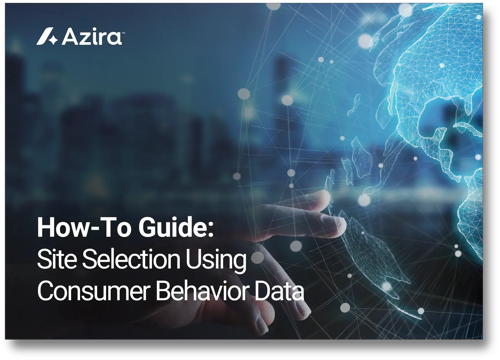Many QSRs and retailers require a hefty investment to open a new location. We’re talking $1M+ type of hefty. On top of that, success is still not always guaranteed.
With so much on the line, site selection is a critical decision – one that can’t be left to guesswork or outdated rules. Today, more and more restaurants and retailers are trusting powerful consumer behavior data with location intelligence to get them the results and the growth they’re seeking. And it’s paying off.
Introduction
The locations of your stores are crucial for success - your decision around location could be the one thing that makes or breaks your business. For example, the average cost of opening a restaurant location in the U.S. could be $275,000 or more depending on the locality, size, and more; some popular fast food chains top $1 million per location. But even with all that investment, success is far from guaranteed. According to data, 30% of restaurants fail within the first year in the U.S. Retail locations also require high investments and face similar challenges. In such a competitive space, it is crucial for businesses to make an informed decision before investing heavily in a new location.
Site selection analysis informed by consumer behavior insights centered around location intelligence can help you remove some of the risks by enabling decisions backed by data. The ideal store location varies depending on what you sell or your objectives, and location intelligence can provide insight into the many questions you need to answer during the process. For example, some of the factors to take into consideration are population density, demographics of consumers in the area, brand affinities of those customers, ease of travel to the site, location of competitors nearby, proximity to your other locations, and more.
Site selection analysis uses consumer behavior data to analyze and evaluate the right location for your business based on multiple factors, including consumer demographics, behavior, interests, and more. In this e-book, we will look at commercial site selection, how to use insights from location intelligence or mobile location data to answer key questions, and how Azira’s site selection solution works.
What Is Site Selection?
Site selection can be defined as the process of assessing multiple location options for a potential store or restaurant location and choosing one based on its relative advantages and disadvantages.
Understanding consumer movement in correlation with other factors has been a challenge for many industries, especially the retail and restaurant sectors. This information has crucial benefits for the brand, not only influencing the decision-making on where the next location would be, but also the marketing strategy, merchandising, and store planning.
With access to location intelligence, brands can now answer key questions on consumer movement and behavior in real-time, driving revenue and improving the customer experience. With these insights, brands are no longer limited to the traditional methods of site analysis, such as drawing 1-3-5 radius rings or manual traffic counting, which can not only be time-consuming but also inaccurate and limited in the insights they provide.
With consumer behavior data, brands can now answer key questions on consumer demographics, brand affinities, cannibalization, competitor visitation, and more for any site they survey.
Three Approaches to Site Selection
The method of evaluating a site can vary depending on the use case; for example, a QSR brand might be focused on attracting customers for takeout or online delivery, whereas an upscale restaurant might want to attract customers for a sit-down experience. In this case, the QSR brand would choose a location based on factors like traffic flow and proximity to highways, while the restaurant will need to consider areas that attract more foot traffic or parking availability.
Here are three common methods of site selection based on the type of location to be analyzed:
- Analyzing an existing location
- Proxy Location
- Macro Approach
1. Analyzing an Existing Location
Analyzing a current location usually involves studying previous patterns for a location.
For example, a retail brand like Target could analyze a site previously occupied by a competitor like Walmart to check if it would be a good fit for them.
Brands can answer key questions such as:
- Where do visitors to this location live and work?
- What is the trade area and what paths do consumers take to get to this location?
- What are the brand affinities of visitors to this location?
- Where are the most popular areas of a shopping center?
- What time of day or day of the week is the busiest at the shopping center?
- What were the visitation patterns for the previous tenant?
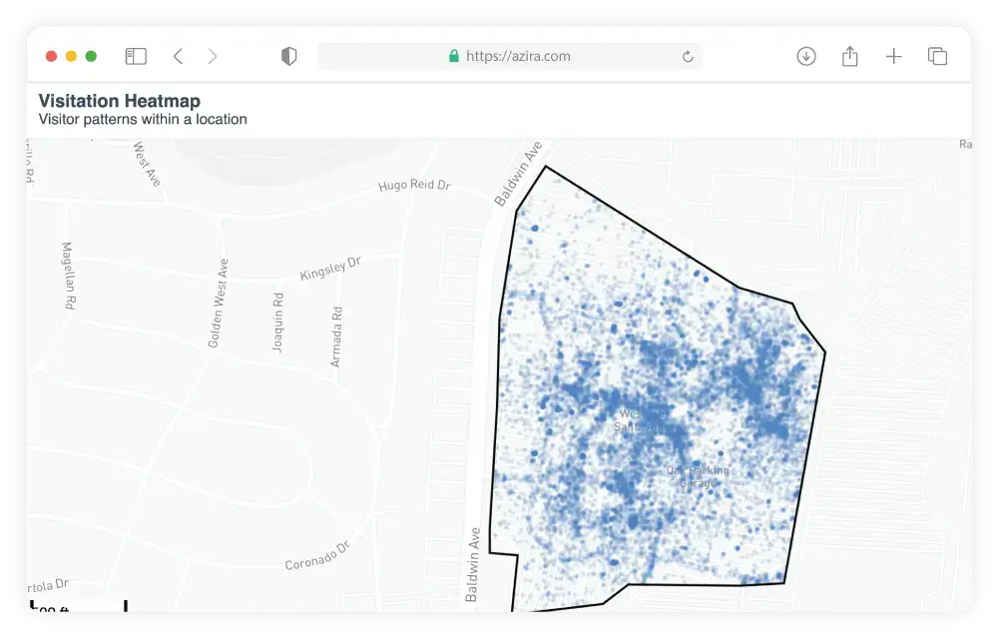
These insights can be gained from pin reports or dayparting reports (point-in polygon reports that can be used to analyze visitation patterns) and can help a brand improve the customer experience or increase sales.
2. Proxy Location
Brands can analyze and compare multiple proxy locations when the location under consideration is new construction or did not have a similar store at the site previously. For example, a commercial real estate brand could be studying the draw of a potential location to recommend or market to a retail client.
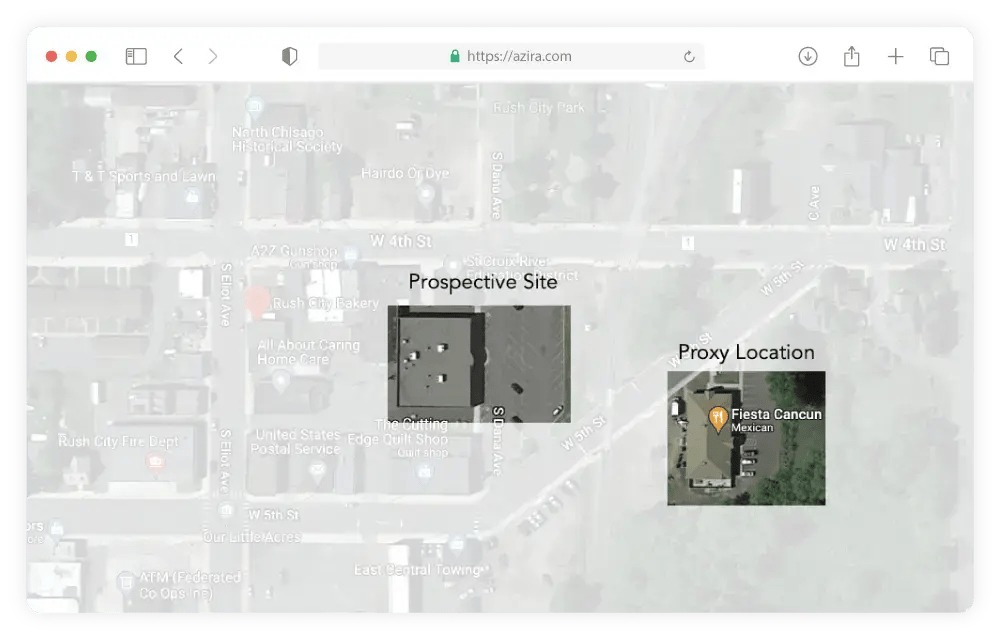
Some key questions they can look to answer are:
- What are the consumer demographics of visitors at the target site?
- Where do potential customers live and work?
- What is the site’s potential trade area?
- Are there choke points that can deter visitors from traveling to this
location? - Does the site attract tourist foot traffic, and at what time during the
day/week? - What other brands have been successful in this trade area?
3. Macro Approach
A macro approach works best when the brand wants to analyze a general market area and not a specific location. Brands can understand where audiences like to shop or eat during the weekends, brand affinities, popular areas attracting crowds, and more.
Some insights that brands can gain from this approach include:
- Geosocial affinity, location affinity, demographics of audiences in the area
- Most popular spots/intersections/restaurants in the area
- Daypart popularity -Where consumers are seen the most, the time of day or day of the week
- Competitor performance
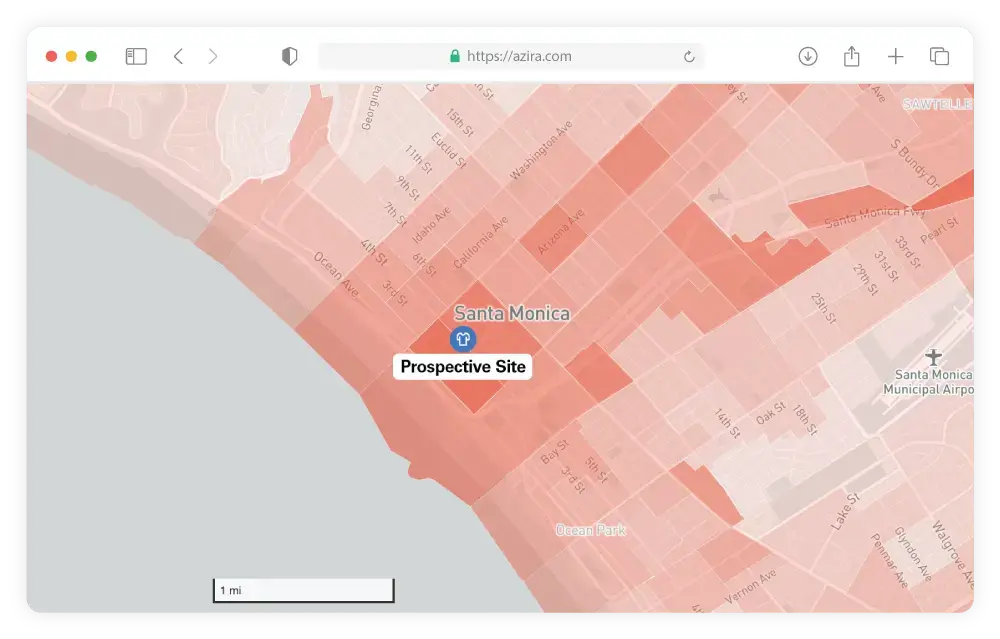
What Insights Can Inform Your Selection?
The Questions you answer from site selection analysis can be limitless. Let us take a look at 10 crucial questions brands should answer before opening a new location
1. Where will the location draw customers from?
Understand where the visitors to the site come from and determine where local marketing efforts must be concentrated such as billboards or posters etc. Trade area reports can enable brands to assess the mobile trade area for a specific site. You can also uncover the median distance of customer home locations and what percentage of them live close or further away.
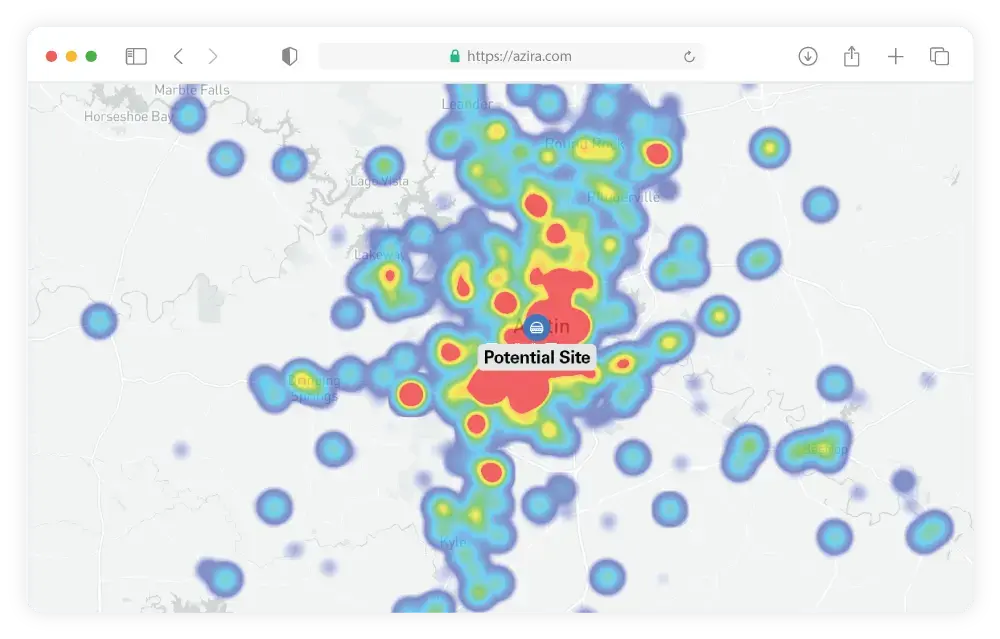
2. Who is my potential customer and where do they live and work?
Understand your potential customer better with insights into their age groups, ethnicity, income, education, and more. Analyze the home and work locations of your customers to understand which areas they are concentrated in. This can help brands understand where their customers travel from, the routes they take, or which areas could be a potential site for a new store. For example, understanding work locations can help restaurants and QSRs draw lunchtime crowds with special discounts or offers.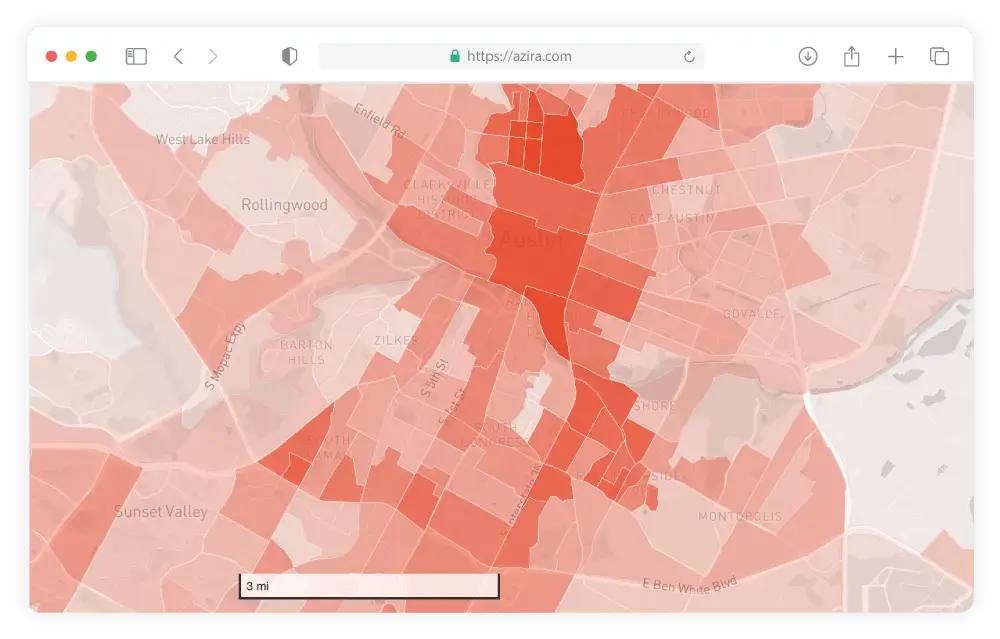
3. Where do customers go before/after visiting my site?
Pathing reports can uncover the route taken by customers to reach your location and also where they go before/after they visit. This can help brands better understand consumer interests and habits such as whether they like to visit Starbucks before they visit your grocery store, which indicates they might be coffee lovers and might like a discount on coffee beans.
Cross-visitation reports can help you understand at what other locations (yours, competitors, or affinity brands) your potential customer cohort spends time.
4. Who are my competitors?
Brands can also assess trade area overlaps and visitors to their competitors located in the area. Competitor analysis could include understanding visitor demographics, brand affinities, consumer behavior, and visitation patterns to attract more potential customers to your brand.
5. Does my store cannibalize other stores in the area?
Brands looking to open new store locations can assess if new store locations could be causing cannibalization drawing customers away from an existing store in the area.
Identifying cannibalization potential would prevent taking business away from a successful store location and ensure the new site draws more new potential customers rather than poaching existing customers from another store location.
6. What is the busiest area in my store, street, or shopping center?
Identify the area or store in a shopping mall that is a hotspot and attracts the most people. This can be useful for brands looking to optimize their potential store location in a shopping mall or area. You can also uncover which area near your location is a hotspot for tourists or shoppers for strategically placed ads.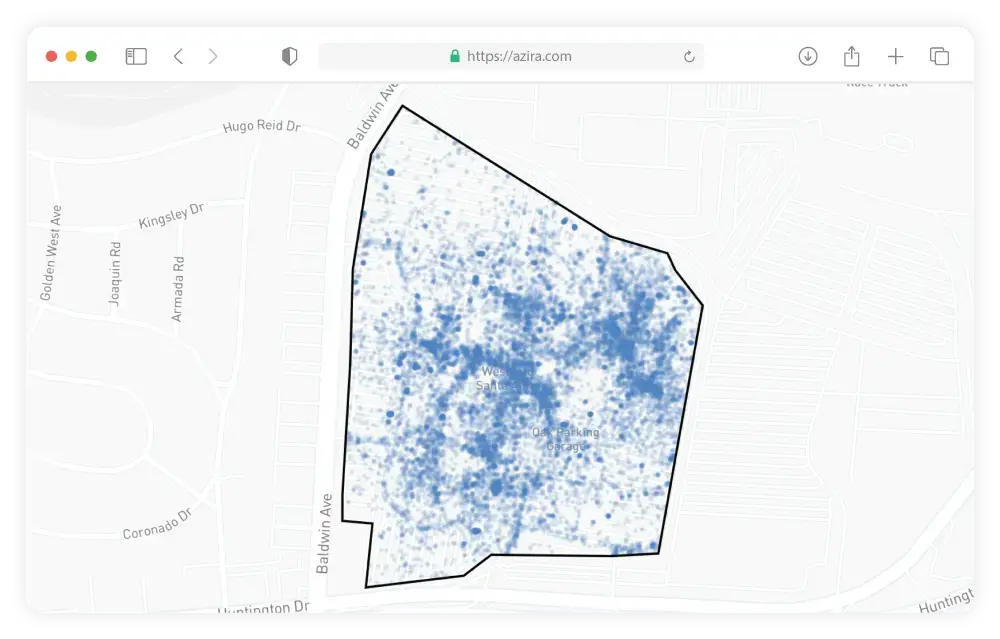
7. How has activity changed over time in a particular area?
Brands can analyze changing trends in particular areas, such as a central business district, to understand changing consumer demographics and behavior over time. This information can help brands choose areas that are the best fit for their brand based on current trends.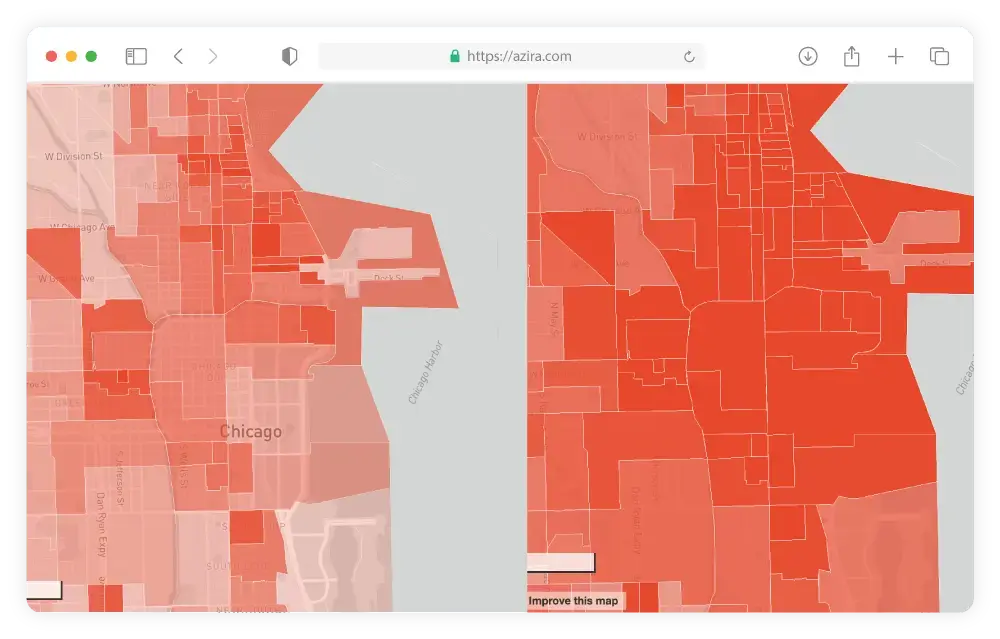
8. What are the up-and-coming areas in my target markets?
What was a popular area among millennials or Gen-Z a few years ago might not be the same today. Analyze up-and-coming areas, other brands, or competitors that might already be present and ensure you don’t miss an opportunity to attract more customers in your target demographic. In this way, evaluating for site selection can also help you stay ahead of consumer behavior trends.
9. What are the peak hours/days of activity for an area that I want to consider for a new store?
Use consumer behavior data to understand the peak hours of the day and days of the week when foot traffic at the site is the highest. This analysis can be further broken down into foot traffic to inform the marketing strategy at your store. It is important to know the peak hours of activity for your location to inform operational decisions such as staffing, inventory, and merchandising. QSRs looking to attract lunchtime crowds would do well to select a site that has high weekday foot traffic.
10. What routes do my customers take to reach my site?
Understanding travel routes is important to evaluate if the new site is easy to travel to or if there are potential choke points along the way that could dissuade potential customers from visiting.
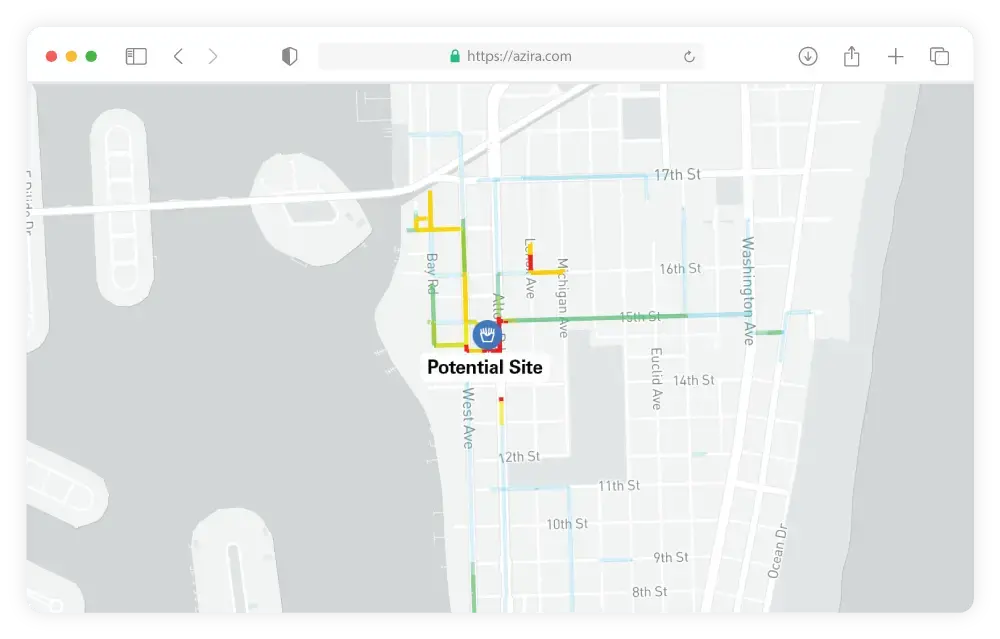
Case Studies
Site selection can look very different depending on a brand’s products, target audience, and strategy.
Here are two examples of how brands used consumer behavior data to inform site selection.
- How QSR Brand Pollo Campero Used Consumer Behavior Data to Inform Their U.S. Expansion Plan
- How Directory of Major Malls Used Consumer Behavior Data to Uncover Precise Shopper Insights
1. How QSR Brand Pollo Campero Used Consumer Behavior 1 Data to Inform Their U.S. Expansion Plan
Challenge:
Pollo Campero is a fast-casual restaurant chain offering Flavorful Chicken Meals and is one of the largest chicken chains in the world. It started as a small family-owned business in Guatemala in 1971, and today has over 80 restaurants in the U.S. The chain has a growth strategy to rapidly expand across the U.S. and beyond. The brand wanted to inform their real estate strategy with insights on their consumer persona, home locations, and preferences. This would enable them to identify the best potential sites for more restaurants in the U.S.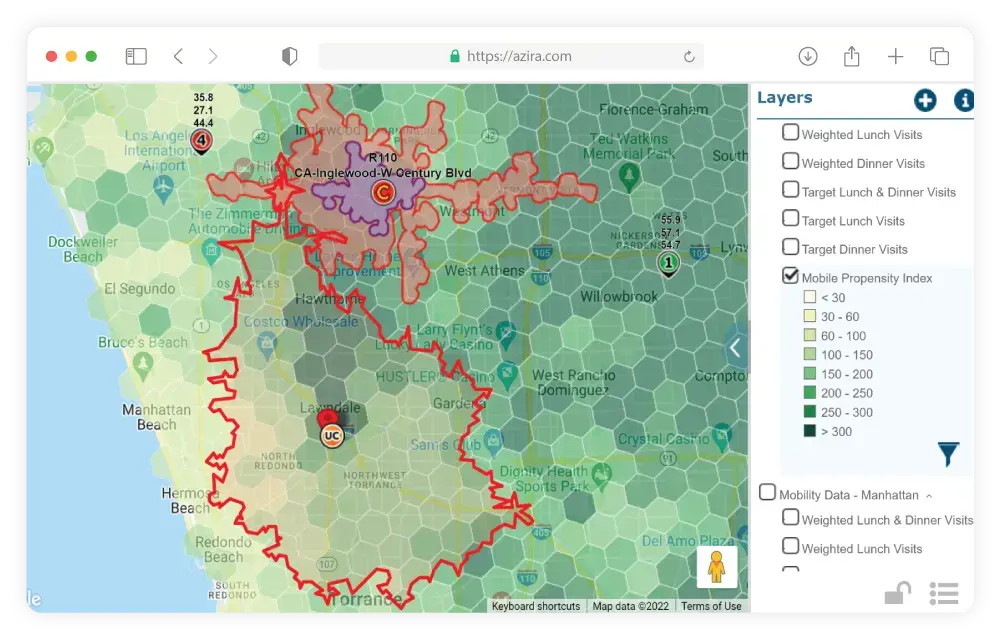
Solution:
Pollo Campero used location intelligence to identify their target customer segments and map the segments by daypart everywhere in the US. This analysis enabled them to identify and rank 500 top intersections for new franchise or corporate outlets. They did this by using a proprietary scoring method on prospective locations and used insights from site selection analysis combined with regression models to identify the most promising locations.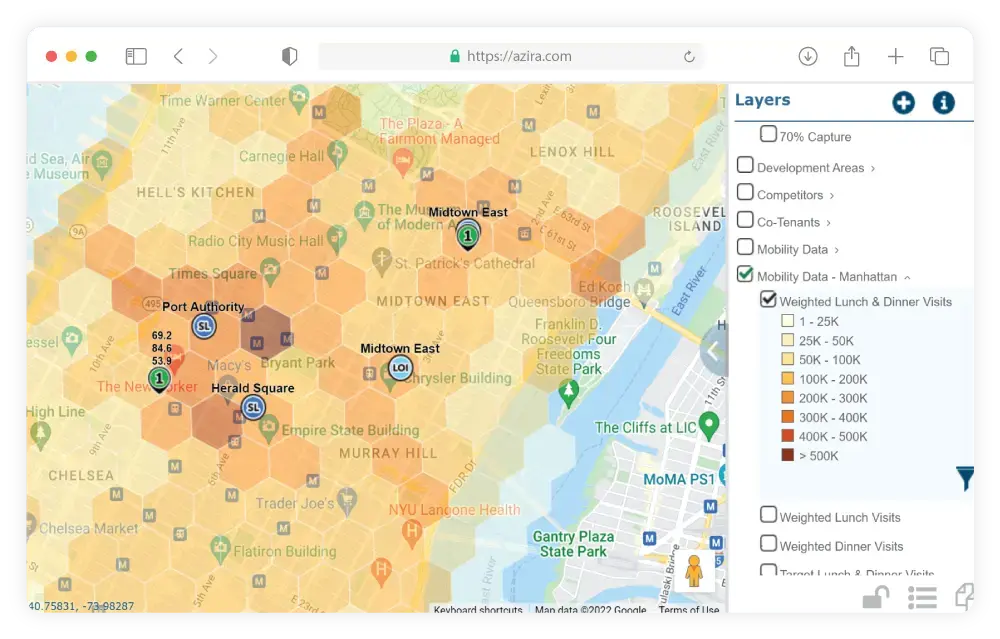
Results:
Using site selection analysis enabled Pollo Campero to create a data-driven real estate strategy
The data help them answer key questions such as:
- Who their target audience segments are in the U.S., where they live, and where are they at key dayparts?
- Which are the top locations across the U.S. at which to open 200 restaurants in five years?
2. How Directory of Major Malls Used Consumer Behavior Data to Uncover Precise Shopper Insights
Challenge:
Directory of Major Malls (DMM) is a leading source of comprehensive major shopping centers and mall data. DMM wanted to level up their insights with more robust and real-time data that could help their retail brand subscribers stay on top of trends in a quickly evolving retail landscape.
Solution:
Existing traditional methods discussed previously, such as radius rings or manual traffic counting, did not provide accurate, multi-dimensional insights. DMM was able to use Azira’s consumer behavior data as a catalyst to develop a mobile analytics product and analyze trade areas for over 7,800 shopping centers and malls in the U.S.
DMM subscribers could now use the data to answer specific questions around site selection, including:
- From how far does the shopping center pull?
- What are the target customer profiles and lifestyle behaviors of audiences near the center?
- What are the demographics of visitors to the center?
DMM’s subscribers can now use the data to elevate their decision-making process - both operational and marketing, by quickly uncovering insights into center and tenant mix metrics, mobile traffic for trade areas, identifying targeted consumer marketing and advertising opportunities, and more.
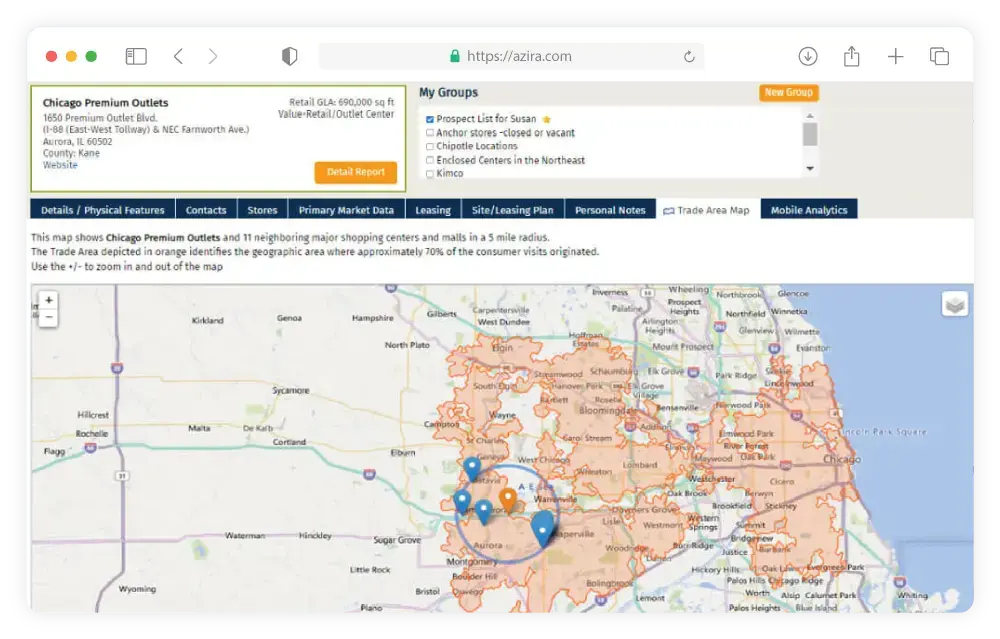
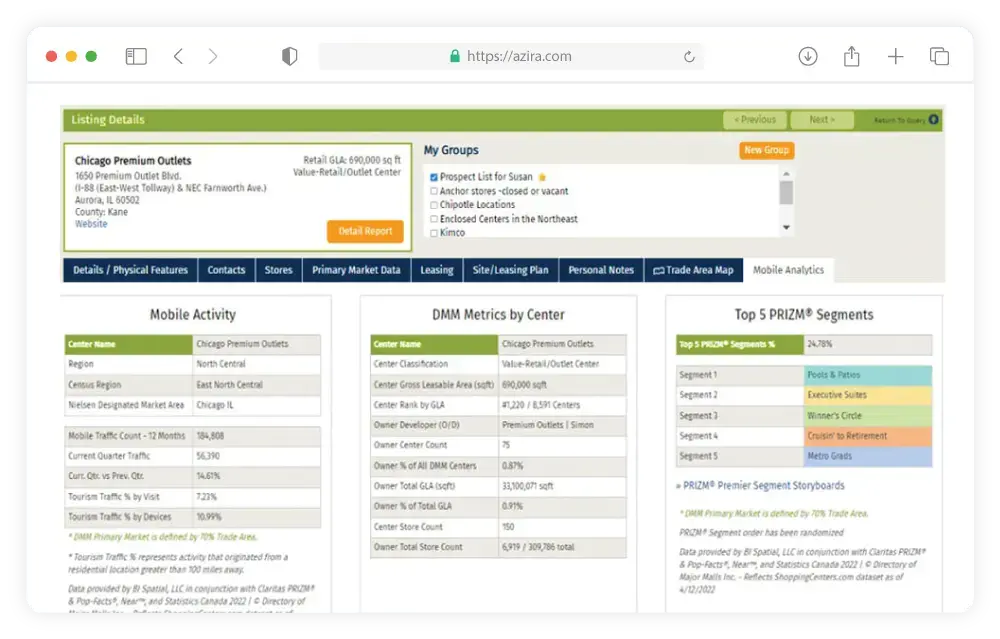
Azira’s Site Selection Solution
With Azira’s site selection solution, your site selection process is driven not just by the demographics of people living in and around the area but also by the economic conditions, competitive landscape, and other community insights – enabling you to hone in on the most optimal site location for growth and profitability.
Using Azira’s platform, you can answer key business questions like is my store cannibalizing another, where are my customers coming from, or what route do they take to arrive at my store? Get real-time insights by choosing a new location and setting custom parameters and timeframes. Choose from an exhaustive library of polygons or draw one of your own for a specific location.
What differentiates Azira’s solution from others in the market?
1. Instant insights with pre-processed locations:
You can choose from an exhaustive library of 1.2 million locations to analyze or with which to compare your location. For example, if you are a QSR brand, you can choose and compare your site with four different locations of competitors in your area.
2. Flexibility to define proxy locations:
The Azira platform also enables you to draw a polygon around any location you want to assess. It could be the front of your store or a proxy location at a target area that you are assessing for expansion.
3. Insights beyond location data:
Apart from location intelligence, you can also choose to study the data linking to demographics/psychographics or consumer behavior data allowing you to understand your audience better. The use cases could be limitless. For example, you can study the consumers that visit a popular vegan restaurant nearby to inform the marketing strategy for a product that could interest that segment.
